When I first walked up to Loarre Castle, I immediately noticed how the changing light and weather shaped every view. If you want the best photos and atmosphere, try visiting early in the morning or late in the afternoon. That’s when the crowds thin out and the sunlight throws warm, dramatic shadows across those ancient stone walls.
Every season shifts the mood. Spring brings green hills and wildflowers. Autumn turns the landscape gold and red.
I parked close by, so the uphill walk to the entrance was short. It’s easy to lose track of time in the quiet courtyards and winding staircases.
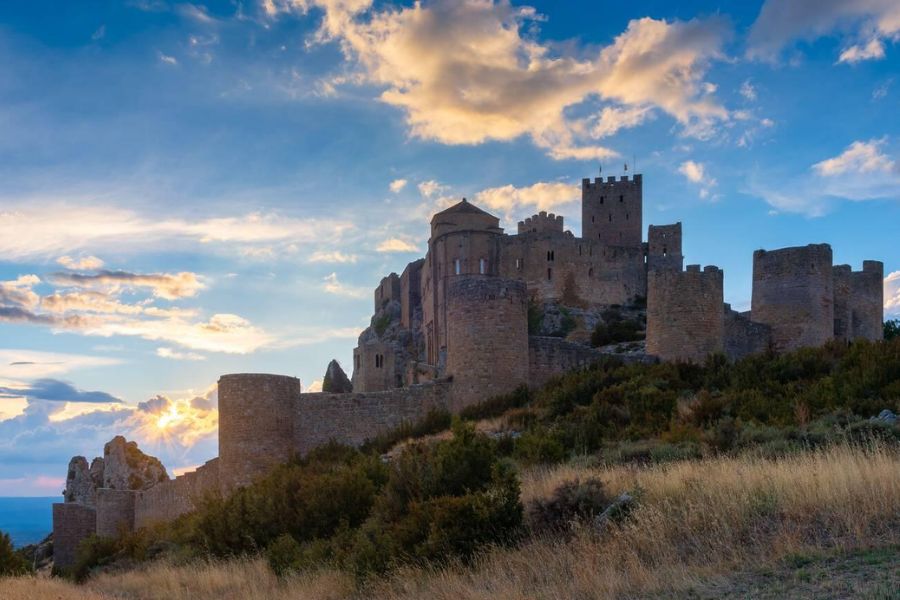
Finding the right moment for photos isn’t just about the light—it’s about catching the castle when it feels most alive or, sometimes, just peacefully empty.
Discovering Loarre Castle: A Brief History and Architectural Highlights
When I first saw Loarre Castle, I felt its deep connection to Spain’s layered history. Defensive walls, Romanesque arches, ancient chapels—every stone tells a story and the views of the Pyrenees foothills are just stunning.
Origins and Evolution of the Fortress
Loarre Castle sits on a rocky hilltop above the plains of Huesca in northern Spain. King Sancho Ramírez of Aragon ordered the earliest walls built in the late 11th century.
He picked this spot for a reason. From here, you could watch over the old Roman road that once connected the region to the rest of the Iberian Peninsula.
Over the years, Loarre changed from a strategic fortress to a small walled city. Romans, Visigoths, Moors, and early Christians all passed through and left their marks.
The Greeks never settled here, but Roman influence is obvious in the castle’s location and the layout of nearby roads and churches.
Builders originally constructed the castle for military defense against the Moors, especially as Aragon expanded. After Christians conquered Huesca, Loarre’s role shifted more toward administration and religion, and they added a lot in the twelfth century.
Romanesque and Other Architectural Styles
Romanesque design dominates Loarre Castle. As I wandered through the corridors, I spotted rounded arches, thick stone walls, and sturdy towers.
Most of what you see today was built between the late 11th and early 12th centuries. The style feels solid, simple, and built to last.
Inside, the tiny but elegant church of Santa María really stands out. Its stone vaulting and sculpted columns catch the afternoon light through small windows.
Later centuries brought a few Gothic touches, but the castle’s heart stays Romanesque. It’s honestly one of the best preserved examples in Europe.

You’ll also find hints of even earlier times. Ancient sarcophagi, old graves, and bits of ruined Roman roads lie nearby. It’s like history here stacks up, page after page.
Remarkable Features and Highpoints
Some parts of Loarre Castle really stuck with me. The albarrana towers shoot up above the curtain wall, giving you wide views across the countryside—perfect for both defense and those dramatic golden hour photos.
The keep, or Torre del Homenaje, is especially well preserved. I climbed the narrow stairs and imagined how it once watched over everyone and everything.
Inside the walls, I found twisting corridors, a Romanesque crypt, and small chapels. Builders reused older Roman or Visigothic stones in a few places—a clever way to save time and honor the past.
Sarcophagi tucked into the hillside and stone reliefs hint at early Christian communities and the castle’s shift from fortress to religious space. Even now, Loarre’s quiet towers and chapels feel like a vivid, touchable piece of history.
Seasonal Experiences: How Each Time of Year Transforms Loarre Castle
Light, color, and atmosphere at Loarre Castle change with every season. Each visit feels totally different, shaped by the weather, the landscape’s moods, and the castle’s medieval design.
Spring Blossoms and Gentle Atmosphere
Early spring mornings at Loarre Castle greet me with cool air and wildflowers. The landscape wakes up with fresh greens and pops of purple and yellow.
I notice the castle’s stonework looks softer under gentle clouds, and those details just pop in photos.
I usually see fewer visitors in spring, especially if I show up near opening. That peaceful feeling is perfect for sketching or just taking a quiet walk.
The light stays soft, so colors in my shots look more vivid. Birds fill the air with their songs, adding to the gentle mood.
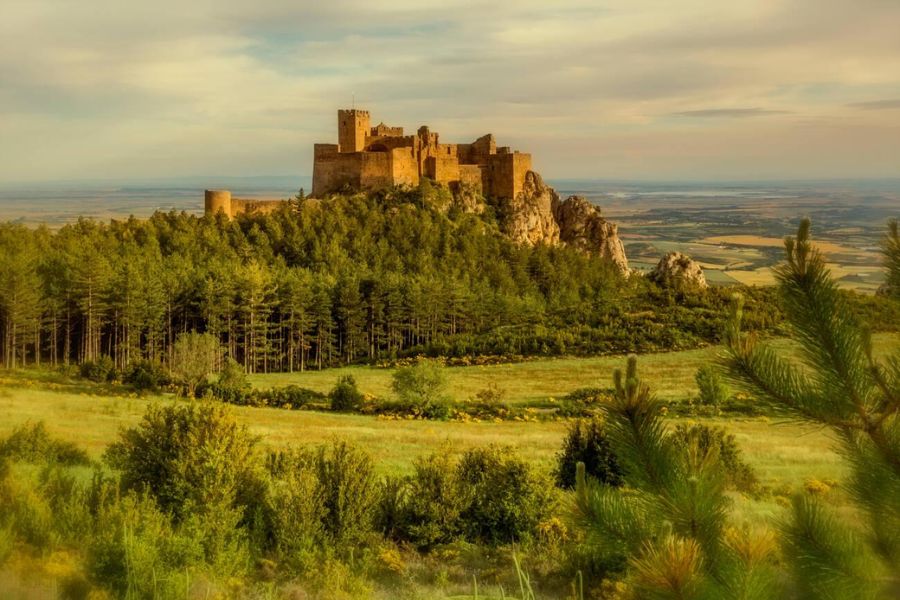
Spring has its own personality—a mix of rain and sun. Even a short shower can add drama, with mist swirling around the towers as the clouds clear.
Summer Light and Bustling Vistas
Summer turns Loarre Castle into a sun-soaked landmark with long days and strong sunlight. The castle’s highpoint stands out against a deep blue sky.
It gets lively as more people show up, but if I go early or near closing, I sometimes catch golden hour almost alone.
Midday brings bold shadows that carve out the castle’s facades—great for photos with dramatic contrast.
From the walls, you get sweeping views of gold fields and bright light. The Romanesque architecture really pops in the sun.
I like to hunt for creative angles, especially around the warm stone arches and inner courtyards.
| Tip | Best for |
|---|---|
| Arrive early or late | Fewer crowds & softer light |
Autumn Colors and Golden Hour Enchantment
In autumn, the countryside below the walls glows orange, red, and gold. The castle’s mood shifts as sunlight turns lower and softer.
I always bring my camera for the golden hour. The whole fortress seems to shine.
Chillier days mean clearer air, and sometimes I spot the distant Pyrenees in my landscape shots.
Falling leaves crunch under my feet—sometimes I just sit with a sketchbook, trying to catch the changing colors in a quick drawing.
There’s a sense of peacefulness as summer crowds fade away.
The castle’s design stands out even more, framed by bursts of color. Evening light throws long shadows that highlight the fortress’s best angles.
Winter Mists and Quiet Moods
Winter brings something unique—mist drifts around Loarre Castle in the early morning or after rain, wrapping the towers in a quiet mystery.
Fewer visitors show up, so I get moments of near solitude. It’s perfect for slow walks and careful photography.
Sometimes snow dusts the stones, softening the lines and turning the scene almost black and white.
The atmosphere gets more dramatic, especially under an overcast sky. Every detail—from weathered carvings to iron doors—feels sharper in the quiet.

The festive season brings a different vibe. Holiday decorations light up the entrance, adding a little warmth to the moody setting.
For me, winter is the time to notice the castle’s unique personality and take those reflective, moody photos—even if I have to bundle up.
Capturing Magical Light: My Tips for the Best Photography at Loarre Castle
Great photos at Loarre Castle depend on timing, viewpoints, and the weather. With a bit of planning, you can catch the old stone walls and bold design looking their best, whether the sky is clear or dramatic.
Planning for Sunrise and Sunset
Arriving early or staying late really pays off. At sunrise, the first light hits the castle from the east, bathing towers and walls in soft gold.
Mist often hangs in the fields below, giving everything a mystical feel.
Sunset is just as rewarding. The castle sits high on a rocky outcrop, and as the sun drops, the stone glows warm and the view stretches over the endless countryside.
Clouds sometimes catch the light, adding purple and orange tones.
Here’s what helps:
- Check the weather forecast before you go.
- Bring a tripod for sharp shots in low light.
- Use wide shots for the castle’s silhouette, and try close-ups as the light changes the details.
Best Angles and Hidden Vantage Points
I’ve found favorite photo spots by exploring the grounds. The main entrance frames the architecture nicely.
If you walk up the path, you can line up the arched gates and rugged towers against the sky.
A small footpath loops around the outer walls. From the north side, you see both the scale of the fortress and the valley below.
Climb a little higher to the hilltop highpoint for panoramic shots. Zoom in on details like ancient stone mosaics in the chapel.
Don’t skip the interior. Lonely corridors, small windows, and the way light falls through narrow slits create dramatic shadows.
Managing Weather and Light Challenges
Weather at Loarre Castle can change fast. On clear days, the light is strong and direct—perfect for sharp shots, but tricky for contrast.
I shade my lens with a hat and adjust the exposure on my camera or phone.
Cloudy or drizzly weather doesn’t mean you have to pack up. The moody sky brings out texture in the weathered stones and arches.
Morning mist adds a magical, soft filter, especially for wide shots of the castle against the land.
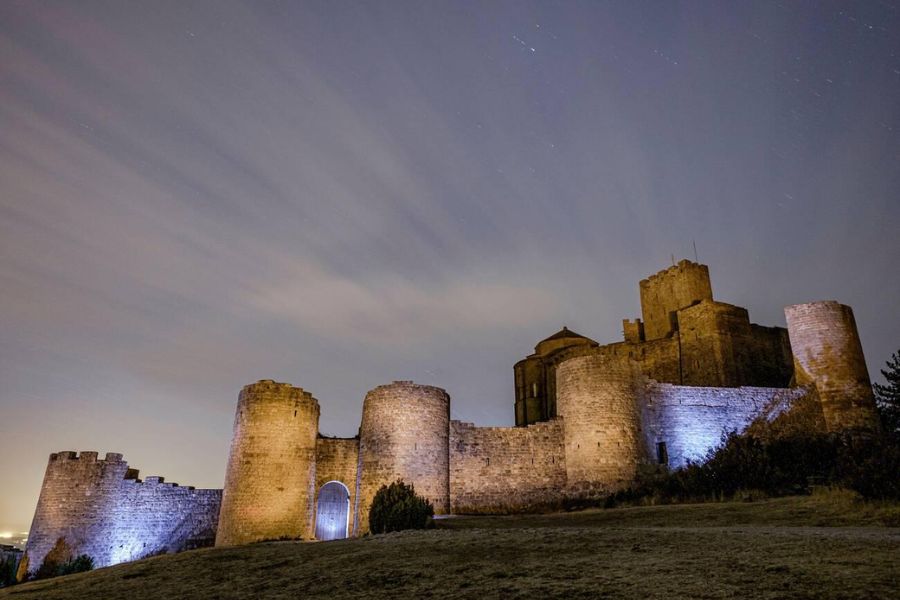
If your camera allows, try higher ISO for overcast skies and lower for bright sun. I always bring extra batteries, since shooting lots of photos—especially in cold or damp weather—drains them faster than you’d think.
Practical Travel Tips: Visiting Loarre Castle Through the Seasons
A little planning makes every visit to Loarre Castle smoother and more fun.
From getting there and what to pack, to finding good food and hidden corners, I’ve picked up some tips that really help.
Getting There and Entrance Essentials
Getting to Loarre Castle is easiest with your own car. Parking sits close to the castle, but be ready for a short uphill walk to the entrance.
I always double-check my route on Google Maps and download the area ahead of time, since cell service can get spotty on those winding rural roads.
You can buy entrance tickets at the castle, but I’ve found that booking ahead—especially in spring and fall—means less waiting.
Guided tours run in Spanish, but you can usually ask for an English translation sheet at the ticket desk.
If you have mobility issues, keep in mind most of the visit is outdoors, with rough paths and stairs. It’s not very wheelchair-friendly.
The staff are friendly and quick to offer advice or give you a rescue call number if you’re hiking up from the nearby village or heading out on trails.
Early mornings and late afternoons are often quieter, and the light is just better for photos.
Useful Packing and Gear Advice
I never visit Loarre Castle without my backpack. I toss in a water bottle, a snack, a spare phone battery, and my camera.
Weather changes fast—so rain jackets and small hats help a lot. Spring and fall are mild, but it cools off quickly and the wind at the top can really blow.
Good shoes are a must. The stone paths get slippery in rain or early dew.
In summer, a wide hat and sunscreen are essential for the strong Spanish sun. I learned the hard way not to overpack—hauling heavy bags up the hill is no fun.

Simple layers work best, so you can add or remove clothes as the temperature shifts.
If you like to sketch or journal, bring a notebook. Inspiration can hit out of nowhere, and the wide views are perfect for sitting down and soaking it all in without rushing.
Local Culture, Dining, and Nearby Gems
Loarre village has a handful of local restaurants and cafes. I always try to time my visit so I can grab lunch after wandering around.
Menus change with the seasons. Still, you’ll almost always find grilled meats and hearty stews.
If your Spanish isn’t great, a translation app on your phone really helps when you’re staring at the menu. Most spots are family-run, and honestly, they’ll usually explain the dishes if you just ask.
Outside the castle, you’ll run into locals who love sharing tips about the area. Once, a farmer pointed me to a hidden hiking trail near the pine woods—definitely off the tourist radar.
If you have a bit of extra time, you should swing by the nearby town of Ayerbe for pastries and supplies.
It might sound dramatic, but I always let someone in the village or at my hotel know when I plan to be back, especially if I’m heading out alone. Sure, the castle’s history is impressive, but honestly, it’s the countryside and the people that make the place feel alive.
Loarre Castle in Context: Connections to Broader History and Nearby Landmarks
Loarre Castle sits on a rocky hill, and it’s more than just a fortress—it’s a chunk of medieval history stitched into Spain’s past. When I visited, I could feel its ties to the rise of Christian kingdoms, centuries of conflict, and a web of sites across Europe.
Christianity and the Expansion of Northern Kingdoms
The spread of Christianity through the Pyrenees and northern Spain in the 11th century gave Loarre Castle its reason for being.
Sancho Ramírez I of Aragon wanted a stronghold and a symbol of Christian faith, so he had it built. The castle’s Romanesque chapel reminded me of San Isidoro in León and the cathedrals in Braga—clear signs of how Christian architecture and traditions traveled.
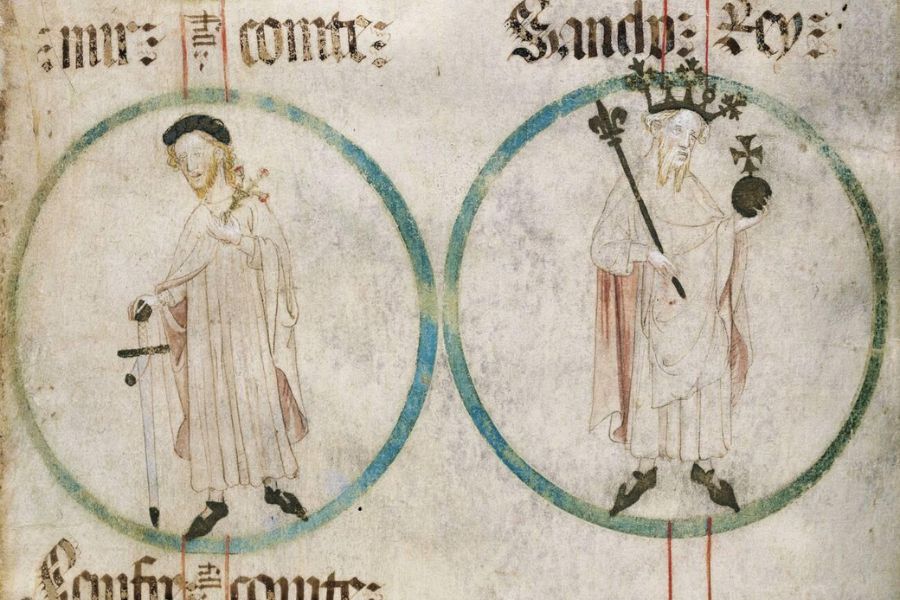
Pilgrims used to pass near Loarre, connecting it to a bigger story of devotion. Churches and castles like this one worked together, securing territory for the northern kingdoms as they grew.
La Reconquista and Al-Andalus
Loarre stands right at the edge of what used to be Al-Andalus, ruled by Muslims in the south. During the Reconquista, the castle served as a crucial outpost for launching campaigns deeper into the Iberian Peninsula.
As I wandered the corridors, I could almost picture armies getting ready for battle. The walls seem to whisper stories of clashes between Christian and Muslim worlds.
Nearby towns and landscapes still carry echoes of those days when borders kept shifting. The mix of styles at Loarre—from the defensive towers to the chapel—shows how cultures blended and collided during La Reconquista.
You can still sense the influence of Al-Andalus in the art and architecture throughout the Huesca region.
Architectural Relatives Across Europe
Loarre Castle really stands out as one of Europe’s best-preserved Romanesque fortresses. When I wandered through its halls, I couldn’t help but notice how much it shares with other Romanesque sites.
The thick walls and those rounded arches instantly took me back to Prague’s oldest churches. I even thought of the Pantheon in Italy, though Loarre feels a bit more modest.
You won’t find the soaring spires of Gothic cathedrals here, or the grand drama of Baroque palaces. Instead, Loarre’s architecture feels grounded—honest, even.
It’s got some things in common with big names like the Duomo in Milan or the old Basilica Ulpia in Rome. There’s that solid stonework, a sense of symmetry, and a clear focus on defense.
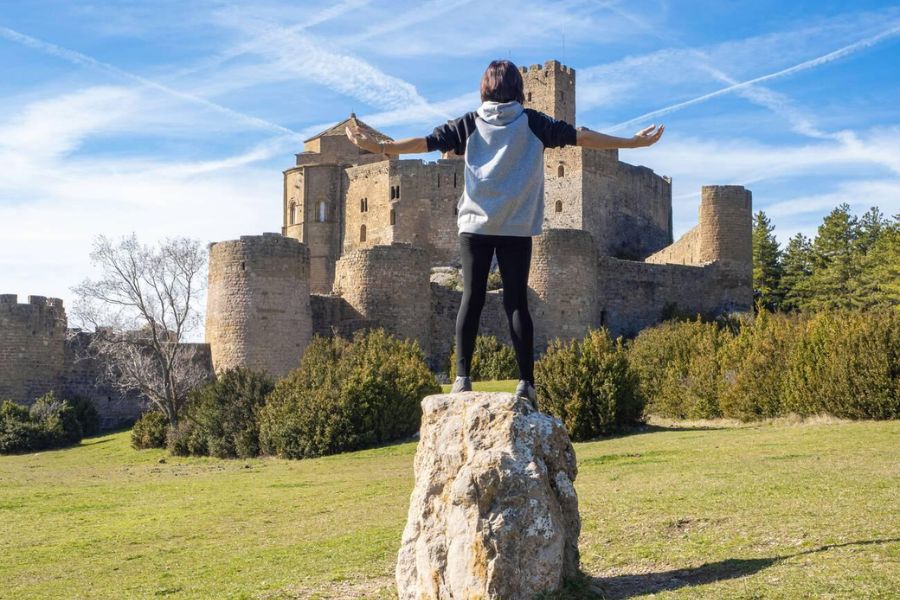
Loarre’s rugged look, especially compared to more polished or classical buildings, just drops you right into the high medieval era. It’s less flashy than later styles, but honestly, I find it more intimate—almost like you can feel the hands that built it in every stone.

